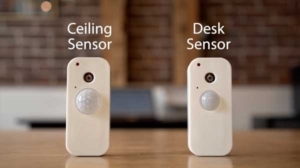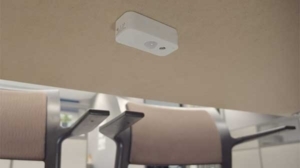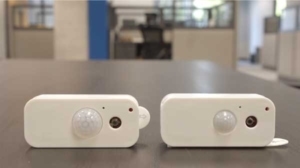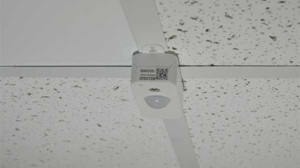Employee Movement Score – The New NPS for Talent Attraction?
Originally posted on WELL Learning Library.
What comes to mind when you think of wellness at work? An on-site gym facility? healthy snacks? Sit-stand desks? Wellness related subsidies, benefits or perks to help pay for programs to lose weight or quit smoking, or to pay for equipment like a treadmill? These are just some examples of what might be provided to employees by their employer to encourage healthy living and well-being. While mainstream ideas of wellness at work revolve around offerings like this, another key factor for ensuring wellness at work is specifically related to the on-premises experience, which aims to measure building health.
If you’re in Corporate Real Estate or in Human Resources, you’re likely aware of the WELL Certification – a performance-based system for measuring, certifying, and monitoring features of the built environment that impact human health and well-being, through air, water, nourishment, light, fitness, comfort, and mind. The underlying premise of WELL is simply the understanding that unhealthy buildings can make people unhealthy.
While WELL is focused on making buildings healthy by bringing awareness to how they stack against WELL standards, they also reward organizations who provide options to employees to support movement. The WELL Movement concept promotes movement, physical activity and active living and discourages sedentary behaviors through environmental design strategies, programs and policies. But, while there are several opportunities to accumulate points towards WELL Certification in the Movement category, much of the opportunities are based on employer offerings such as providing amenities, equipment such as adjustable furniture like sit-stand desks or benefits/perks. Regardless, their success in driving and improving wellness depends entirely on an employees’ willingness to use the amenities, equipment and benefits/perks that are offered. This comprehensive list of Employee Benefits and Perks Statistics indicates that only 28% of employees are very confident they’re fully using their benefits confirming that the effectiveness of such programs resides with the employee.
The Gamification of Wellness
What if companies could compete for the healthiest workforce by reporting on aggregate movement metrics for their entire company. What if they could gamify their movement metrics by competing internally i.e., by team/department and also do so externally with companies in similar verticals?
A new KPI for companies who want to up their game in talent attraction and retention by promoting their movement score is emerging. Think of it as the new NPS-like score that is aimed at driving talent attraction rather than retention as their new competitive advantage.


For example, a future hire might be considering working for Bank A vs. Bank B. The future hire is a moderately active person but recognizes they do not want to work in a highly sedentary environment. By observing the movement score across different banks, they are empowered with the information they need to align themselves with a better suited opportunity that aligns with their overall values and goals, which can now also include health and wellness.
While not everyone will have a wearable device like a Fitbit or Apple Watch (nor will people who do, willingly want to share their personal information), companies could instead use sensors to aggregate already anonymous data captured for other CRE related purposes, to demonstrate where health and well-being ranks in their culture, based on a standardized metric like movement. A movement score like this one tells a story. It reveals how well employee flexibility and movement is supported.
Using Sensors for the Win
IoT sensors have been proliferating the tenant office space to help companies manage return to office protocols like restricted occupancy, social distancing and safe seats. Prior to the pandemic, occupancy sensors, people counters etc. were often installed in offices, with the sole purpose of capturing occupancy and utilization to inform seat demand, reducing and optimizing costly wasted workspace and more importantly, to inform workplace design.
Relogix sensors are unique in that they capture typical occupancy, utilization data but they also are able to capture dwell and churn data which are foundational for any portfolio, building, or floor level occupancy planning exercises, offering a level of accuracy that can’t be replicated with manual clipboard type studies which are often undertaken. The accuracy of information at the most granular level ensures the ability to aggregate the data up to suit the specific need. It also translates into proper efficiency sharing ratios that successfully optimize space when implemented, often yielding a reduction or recalibration of the square foot requirements committed to in a lease.


Dwell-time is a game changer. Relogix sensors which are heat and motion activated, can detect and validate presence at a seat anonymously, every 30 seconds, providing as close to a “real-time” snapshot of workspace occupancy and utilization. Where utilization observes the use of a space over time, standard utilization metrics do not reflect continuous use, but dwell time does. For example, in an 8-hour day, a seat may indicate it was 50% utilized reflecting a total of 4 hours of use. However, the 4 hours of use are not necessarily continuous hours (dwell).
Continuous dwell metrics validate whether those 4 hours were continuous, or if not, how many churns occurred. Each “break” between dwell times constitutes a churn. The ability to calculate in aggregate how many employees are sitting continuously for 1, 2 3, 4 hours or more is effectively translated into a highly valuable movement factor that is unique to only your company and driven 100% by the natural movement of your employees, without requesting the employees to share any highly personal information from their own devices.


Define & Measure Your Unique Competitive Advantage
While today, sharing of personal information is not widely acceptable by most employees, with the emerging shift of where work happens, in the future, enabling employees who do care about their total health and well-being to opt-in to sharing such data would benefit employees and employers as they better understand the impact of movement on overall productivity. While individuals might be contributing to the big picture, the individual data is irrelevant as the data is aggregated for the company as a whole, enabling them to correlate movement to other KPIs like attrition and churn and absenteeism, to name a few.
The COVID-19 pandemic has hit companies hard. Businesses and people have been rotating through lockdowns for over a year. When offices re-open, while occupancies might not get back to what they were for a very long time, if ever, we can anticipate that when people come to the office they won’t be doing so to sit at a desk, and if they do, they won’t be sitting for extended periods of time. Using sensors will provide the intelligence to inform your workplace strategy, but more importantly it will provide the insights that take your competitive advantage to a whole new level where the value of the well-being of your employees isn’t just words on a page, but a measurable and meaningful metric that will uniquely set your company apart.
About the Author

Sandra is known for her deep understanding of Corporate Real Estate and Technology. With over 25 years hands-on experience in North America and the UK with RBC, Purolator, The Coca Cola Company and more. Sandra applies non-traditional approaches to extract deep learning from the most unsuspecting places in order to drive strategy. She has developed an appreciation for always challenging the status quo to provoke and encourage new ways of thinking that drive continuous improvement and innovation. Sandra believes square pegs can fit into round holes and that the real ‘misfits’ are environments that fail to adapt. Her expertise ranges broadly from CRE Portfolio analysis & Insights, Workforce Planning, Strategy Development to Space & Occupancy Planning.
